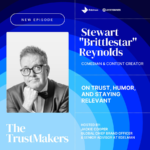By Lisa Powers, Associate UX Director, Capgemini Americas
Super apps are coming to the U.S. market, according to tech industry analysts and journalists who also report strong demand as 67% of U.S. consumers say they want to consolidate their digital lives. Super apps allow users to stay in one digital space for a variety of activities, like shopping, banking, travel planning and food delivery. They’re already popular in Asia and are gaining ground quickly in Africa and Latin America. The number of potential super app users in the U.S. is vast and the business case for a U.S. super app is strong, too. NYU marketing professor, author and media host Scott Galloway has written that “constructing a U.S. super-app is the strategic-imperative of the next decade and could result in the first $10 trillion company.”
Companies and brands should monitor the super app trend and similar strategies closely and determine what role they can play in this new space, whether that’s a presence as a mini app on other brands’ super apps or as their own all-things-to-all-users super app. First, though, it’s important to understand what makes a super app “super,” what the benefits are for users and brands and the experience design considerations that go into developing effective super apps and their components. Design strategy and execution, and the resulting user experience, can make or break a brand’s super app investment.
What Are Super Apps, and What’s Their Appeal?
A super app is a single platform, owned by a single company, which contains multiple services. For example, a dominant super app in China allows users to send instant messages, make payments, bank, play games, book travel, make doctor appointments and do online research. With more than a billion active users, the super app attracts retailers and brands that place their own mini apps — small programs designed to integrate with super apps — on the platform in exchange for a percentage of their sales. Within industries, some brands are also making the transition to super apps. In fact, a buy now pay later (BNPL) provider recently announced its super app to combine shopping, payments, and other financial services.
Good UX design also defines super apps. Bringing together services from a variety of providers into a single streamlined environment requires a well-planned design strategy, so users can access their preferred services without wading through a long menu of options. The closest examples the U.S. market has to offer now are what we might call super brands – tech giants that are offering more services to create a unified experience where people can meet multiple needs within the super brand’s environment. Both super apps and super brands give users the convenience of only needing to sign in once to handle a variety of tasks but super brands are more limited in their scope of offerings.
The other hurdle super app developers face is regulation, especially around banking, data protection and privacy. Those rules require brands to carefully map their super app services and fully understand the ramifications of where user data is going. That said, many companies are starting to build toward super app capabilities by adding new services, such as combining ride hailing and food delivery or health insurance apps that offer virtual urgent care and same-day prescription delivery.
Designing a Compelling Super App Experience
Not every brand has the resources to develop a full-scale super app but even small brands can start thinking about expanding the offerings their app currently provides and developing mini apps that can become part of another brand’s super app ecosystem. For each of these options, some best user experience practices are critical.
Know your audience. A good user experience begins with research to understand who the super app audience is, how they will use the app or its services, how they behave and what will motivate them to use the super app. It’s also important to understand the competition — in the U.S., that’s typically going to be brands that are adding services and features to their apps rather than an established super app — to understand what they offer and how users navigate those offerings.
Plan to educate your audience. New app capabilities can provide convenience but new offerings can also confuse established app users. New app functionality plans should include campaigns to let users know why the brand’s app is moving beyond its traditional offers, what those new features are and why they’re helpful.
Focus on ease of use to drive stickiness. Ultimately, super apps are about getting customers to spend more time with your brand, whether through your super app or through your mini app on a super app platform. This is where studying your audience carefully will pay off, because you can design experiences and navigation for each persona that helps them achieve their goals seamlessly, without having to toggle between apps or reenter credentials. Ease of use also requires designing for a complex interface while simplifying the customer experience, so users can manage choices, features and functions without navigating through clutter to find what they need.
Dedicate resources to usability testing. Once you have your initial super app, mini app, or new app feature designed, rigorous usability testing is the key to ensuring a successful launch and great user experience. Make sure users understand what the new features are, how to use them, and why to use them instead of going to a different app to complete those tasks. Ensure that navigation is intuitive and seamless. Collect feedback and make any necessary changes before testing again until the app or feature is ready to launch.
By understanding the rise of the super app experience in the context of an evolving app landscape, brands can prepare now for a major shift in consumer journeys and develop strategies to strengthen brand loyalty and create more immersive experiences.
About the Author
Lisa Powers is associate UX Director at Capgemini Americas with more than 20 years of professional experience in the digital interactive industry. Her expertise spans design, user experience, customer experience strategy and research across industries including automotive, finance, manufacturing, retail, non-profit and media.











